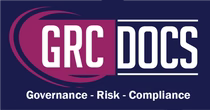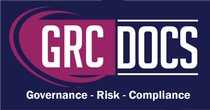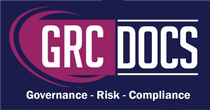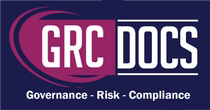What Is Needed For HIPAA Compliance?
Compliance with the Health Insurance Portability and Accountability Act (HIPAA) is essential for healthcare organizations to protect patient privacy, ensure data security, and comply with regulatory requirements. Achieving HIPAA compliance involves implementing a comprehensive framework of policies, procedures, and safeguards to safeguard protected health information (PHI). In this guide, we explore the essential components needed for HIPAA compliance in healthcare organizations and provide insights into best practices for implementation.

Understanding HIPAA Compliance
HIPAA comprises several rules and regulations designed to protect the privacy and security of PHI. The key components of HIPAA compliance include the HIPAA Privacy Rule, Security Rule, and Breach Notification Rule. The Privacy Rule establishes standards for protecting the privacy of PHI, while the Security Rule outlines requirements for securing electronic PHI (ePHI). The Breach Notification Rule requires covered entities to notify individuals, the Secretary of Health and Human Services, and, in some cases, the media of breaches of unsecured PHI.
Essential Components For Achieving HIPAA Compliance
- Policies and Procedures: Develop comprehensive policies and procedures that address HIPAA requirements for privacy, security, and breach notification. Document procedures for accessing, using, disclosing, and safeguarding PHI, and ensure that policies are reviewed and updated regularly to reflect changes in regulations, technology, and organizational practices.
- Risk Assessment and Management: Conduct regular risk assessments to identify vulnerabilities, threats, and risks to PHI. Assess the organization's administrative, physical, and technical safeguards to evaluate compliance with HIPAA requirements. Develop risk mitigation strategies and corrective action plans to address identified risks and vulnerabilities.
- Training and Education: Provide ongoing training and education to employees, contractors, and business associates on HIPAA regulations, privacy practices, and security awareness. Offer training programs, workshops, and online courses to reinforce compliance expectations and promote a culture of privacy and security within the organization.
- Access Controls: Implement access controls to restrict access to PHI to authorized individuals with a legitimate need to know. Use role-based access controls, unique user identifiers, and strong authentication mechanisms to limit access to sensitive health information and prevent unauthorized disclosure.
- Encryption and Data Security: Deploy encryption and data security measures to protect ePHI from unauthorized access, use, or disclosure. Encrypt data at rest and in transit, implement encryption protocols for electronic communications, and use secure transmission methods to protect PHI from interception or tampering.
- Incident Response and Breach Notification: Develop and implement incident response and breach notification procedures to address security incidents and breaches involving PHI. Establish protocols for reporting, investigating, and responding to security incidents containing breaches, as well as notifying affected individuals, regulatory authorities, and other stakeholders in accordance with HIPAA requirements.
- Business Associate Agreements: Enter into business associate agreements (BAAs) with vendors, contractors, and service providers who have access to PHI on behalf of the organization. Ensure that BAAs include provisions requiring compliance with HIPAA regulations and specify the responsibilities of business associates for protecting PHI.
- Audits and Monitoring: Conduct regular audits and monitoring activities to assess compliance with HIPAA regulations. Review policies, procedures, and practices related to privacy, security, and breach notification, and identify areas for improvement. Monitor user activities, access logs, and security incidents to detect and respond to potential violations of HIPAA requirements.
Best Practices For Achieving HIPAA Compliance
- Establish a Compliance Program: Establish a formal HIPAA compliance program within the organization to oversee and manage compliance efforts. Designate a HIPAA compliance officer or team responsible for coordinating compliance activities, developing policies and procedures, providing training and education, and monitoring compliance with HIPAA regulations.
- Conduct Internal Audits: Conduct internal audits and self-assessments to evaluate compliance with HIPAA regulations. Use audit findings to identify areas of non-compliance, implement corrective actions, and improve overall compliance posture. Regularly review and update audit procedures to ensure alignment with HIPAA requirements.
- Obtain Third-Party Assessments: Engage third-party auditors or consultants to conduct independent assessments of HIPAA compliance. Third-party assessments provide an objective evaluation of compliance efforts, identify areas for improvement, and offer recommendations for enhancing compliance with HIPAA regulations.
- Participate in External Audits: Participate in external audits conducted by regulatory agencies, accreditation bodies, or other authorized entities. Cooperate with auditors, provide requested documentation and evidence, and address audit findings in a timely and transparent manner. External audits should be used as an opportunity to validate compliance efforts and demonstrate commitment to HIPAA compliance.
Conclusion
Achieving HIPAA compliance requires a multifaceted approach that encompasses policies, procedures, safeguards, training, and monitoring activities. By implementing essential components such as policies and procedures, risk assessment and management, training and education, access controls, encryption and data security, incident response and breach notification, business associate agreements, and audits and monitoring, healthcare organizations can effectively safeguard PHI and comply with HIPAA regulations. Through proactive compliance efforts and adherence to best practices, healthcare organizations can protect patient privacy, ensure data security, and maintain trust and confidence in the healthcare system.




